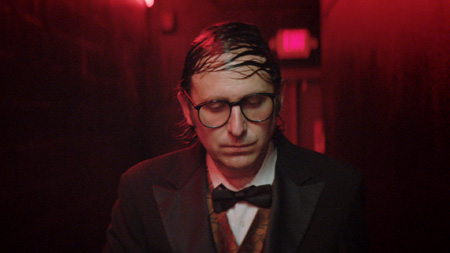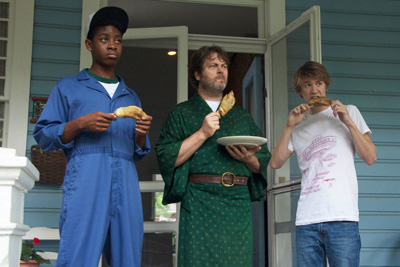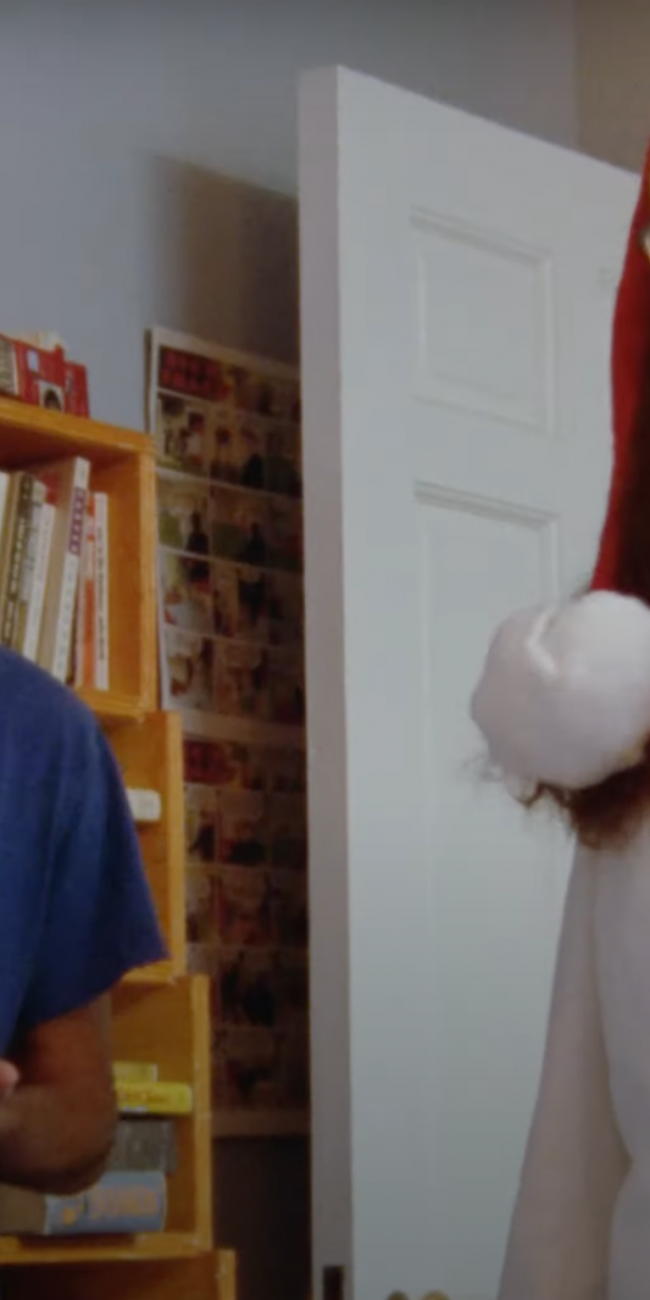 In 2015, the indie audience continues to shapeshift and thin down while most of the films that do manage to get made spiral toward banality. This ongoing creative rut is empowered by conservative investors and distributors who are chasing some imagined, evasive target audience, which is further exacerbated by uninspired, cowardly festival programming. But despite this bleak state of affairs, this year there were many cinematic gems that a limited audience got to hear about and hopefully see. At the same time, I mourn all of the other great films that never got made, as bold personal filmmakers once again have to put their projects on ice as market correction continues.
In 2015, the indie audience continues to shapeshift and thin down while most of the films that do manage to get made spiral toward banality. This ongoing creative rut is empowered by conservative investors and distributors who are chasing some imagined, evasive target audience, which is further exacerbated by uninspired, cowardly festival programming. But despite this bleak state of affairs, this year there were many cinematic gems that a limited audience got to hear about and hopefully see. At the same time, I mourn all of the other great films that never got made, as bold personal filmmakers once again have to put their projects on ice as market correction continues.
There is no doubt, considering the amount of fiction features made every year in the United States, that overall indie cinema is in a serious rut. This is due to the significant drop in demand for the feature film format, added to the reality of long-form cable TV series stealing our former thunder, combined with filmmakers being utterly confused as to where they should exist in a market that essentially doesn’t exist. The commercial “American Indie Industry” has always historically functioned in a dialectical manner with studio production; in the ‘50s, it was the independent sphere that churned out product for youth, which the studio system wasn’t hip enough to realize was a worthwhile demographic. From Annette Funicello on the beach to Dennis Hopper on a chopper to naturally lit drive-in horror, indie has always been driven by content demand unserved by the big budget boys.
 Currently, the studio system is primarily concerned with one of three types of spectacles: big budget tentpole comic book franchises, prestige Oscar bait (most often period chamber pieces updated to fit the current fad for gender bias-based melodramas), or your standard dumb situation comedy or romance. Financially, larger indies can pay the top salaries for A-list actors and period sets, but comic book-plotted, SFX-driven tentpoles are off limits to most indie budgets. Consequently, we get indie directors left trying to chase the imagined hungry audience that wants sitcom romance and comedy in a feature-length format. In reality, this demand isn’t really there, since most of that audience has migrated to more viewer convenient platforms like Vimeo, Hulu, YouTube, and mid-week network broadcasting.
Currently, the studio system is primarily concerned with one of three types of spectacles: big budget tentpole comic book franchises, prestige Oscar bait (most often period chamber pieces updated to fit the current fad for gender bias-based melodramas), or your standard dumb situation comedy or romance. Financially, larger indies can pay the top salaries for A-list actors and period sets, but comic book-plotted, SFX-driven tentpoles are off limits to most indie budgets. Consequently, we get indie directors left trying to chase the imagined hungry audience that wants sitcom romance and comedy in a feature-length format. In reality, this demand isn’t really there, since most of that audience has migrated to more viewer convenient platforms like Vimeo, Hulu, YouTube, and mid-week network broadcasting.
Though some smart ambitious features like The Diary of a Teenage Girl will rise above the fray and find some semblance of an audience, any film that is trying to split the difference grammatically —something like Me And Earl And The Dying Girl, which is essentially a poor, uninspired episode of a great old network TV show like My So-Called Life — will continue to wallow and rot on the vine.
 At some point soon, both distributors and filmmakers will get the message: there is no longer an audience for limp, casual TV grammar entertainment in the feature format. That audience has left the room and they are not coming back; it’s just too easy for them to pull up content when and where they want it in attention span-challenged micro-bites. The feature-length format, which asks the viewer to not touch their phone for long periods of time, is just no longer the grazing ground for the casual consumer looking for standard issue distraction. Content for that format must be designed for the consumer, who is willfully looking for something special to justify that investment in time. Big budget men-in-tights franchises, over-hyped events like Star Battles Number Nine, and culturally significant worthy-of-water-cooler-discussion-Oscar-bait-melodramas will continue to be the most significant portion of the feature format business. Low budget indies chasing the crumbs of the straggling casual viewer’s demand for smart situation comedies and romances will hopefully soon become self evidently worthless to the conservative investors who pay for them and the equally conservative and frightened distributors and festival programmers who screen them.
At some point soon, both distributors and filmmakers will get the message: there is no longer an audience for limp, casual TV grammar entertainment in the feature format. That audience has left the room and they are not coming back; it’s just too easy for them to pull up content when and where they want it in attention span-challenged micro-bites. The feature-length format, which asks the viewer to not touch their phone for long periods of time, is just no longer the grazing ground for the casual consumer looking for standard issue distraction. Content for that format must be designed for the consumer, who is willfully looking for something special to justify that investment in time. Big budget men-in-tights franchises, over-hyped events like Star Battles Number Nine, and culturally significant worthy-of-water-cooler-discussion-Oscar-bait-melodramas will continue to be the most significant portion of the feature format business. Low budget indies chasing the crumbs of the straggling casual viewer’s demand for smart situation comedies and romances will hopefully soon become self evidently worthless to the conservative investors who pay for them and the equally conservative and frightened distributors and festival programmers who screen them.
 In my opinion, Me and Earl and the Dying Girl winning both the Audience and Grand Jury awards at Sundance 2015 is one of the all-time lows of American Indie history and it perfectly reflects the confusion of the times. The fact that it did not connect with a mass audience is part of the lesson that I hope all filmmakers, distributors, and investors will take to heart.
In my opinion, Me and Earl and the Dying Girl winning both the Audience and Grand Jury awards at Sundance 2015 is one of the all-time lows of American Indie history and it perfectly reflects the confusion of the times. The fact that it did not connect with a mass audience is part of the lesson that I hope all filmmakers, distributors, and investors will take to heart.
In the meantime, my future audience of educated, sophisticated, non-casual feature film viewers who are only selecting visual tales that require the 90-minute commitment has not yet fully emerged, though I think we get closer each year as more critics finally start to understand what someone like Rick Alverson is up to. Despite all this market driven whining though, the bottom line is that even just with my top five films of 2015, the state of the medium is still pretty healthy as far as personal, formally ambitious visual drama goes.
On top of this, I could also list at least ten great horror films that are both personal and daring while still staying within the broad genre definition. Horror always has been and will continue to be the best genre for low budget formally audacious filmmakers. It doesn’t rely on cast marquee value and at its core it requires lensing that understands the power of the frame line and the dramatic anxiety that stems from controlled pacing, lighting, and composition. Horror always was a major aspect of the American indie “industry” and I predict that in 2016 we will see more personal and formally inventive genre films as the struggle to (re)connect with a mass audience continues.
MY TOP FIVE HTN AWARDS ELIGIBLE FILMS OF 2015
1. Entertainment
2. Heaven Knows What
3. Tangerine
4. Advantageous
5. Buzzard
— Mike S. Ryan
[EDITOR’S NOTE: Tomorrow, we will put our money where Mike’s mouth is by publishing the 2015 Hammer to Nail Awards, featuring the Golden Hammer and Silver Nail as well as our Top 15 Films of 2015. Stay tuned!]











